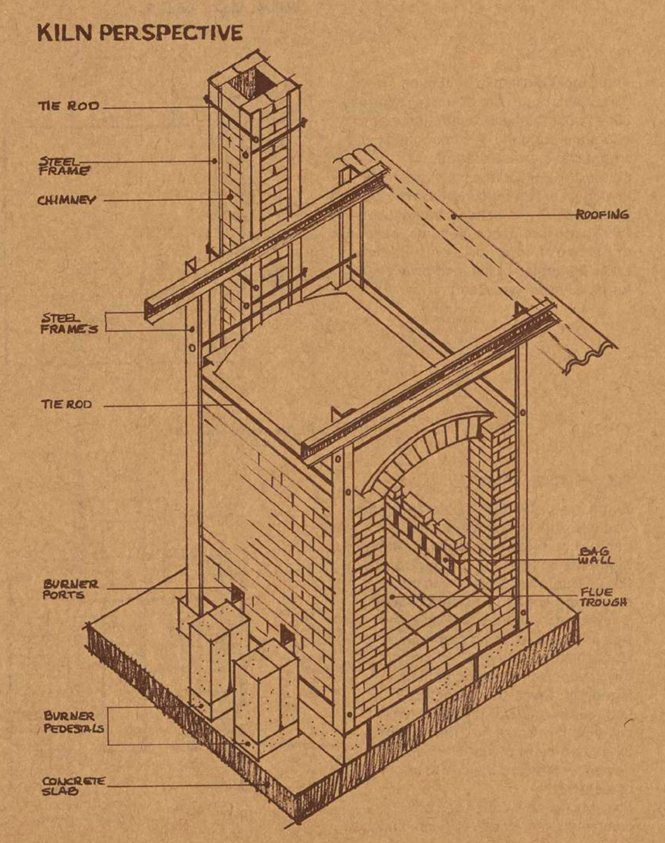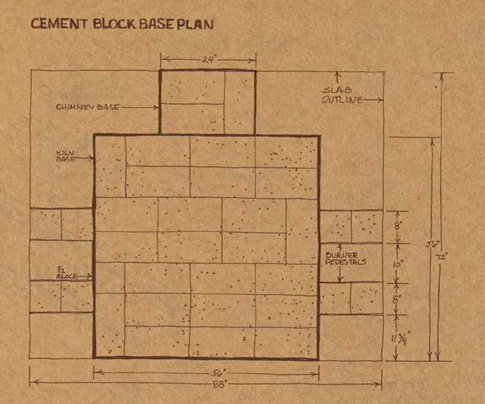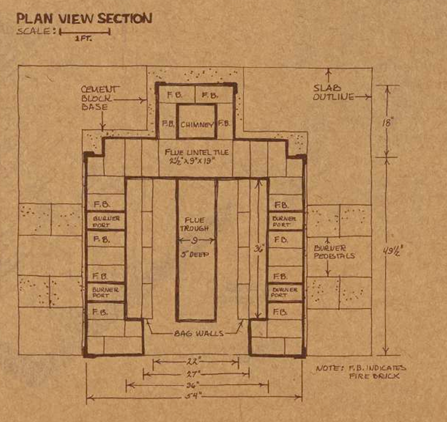The Brookfield kiln is a 30 cubic foot down-draft gas-fired kiln. It was built at the Brookfield Craft Center, Brookfield, Conn., in June 1972. Designed by Harry Dedell, from a kiln by Marion Hubbell, it was constructed during a kiln, workshop conducted by Gerry Williams and Marion Hubbell. These plans are published by permission of the Brookfield Craft Center, and are taken from drawings by Frank d'Autilia. The Brookfield Craft Center is a non-profit organization with summer instructional programs in the crafts, including pottery. Jean d'Autilia is the director. By definition a sprung-arch is any arch supported by abutments at the sides and ends only. Derived in part from the nineteenth century German Cassel and English Newcastle kilns, the sprung-arch kiln in its present form is widely used by potters in this country. It is, along with the catenary kiln, the work-horse of the American studio potter. The sprung-arch is favored for the efficient use it makes of interior space, and for the ease with which it can be built, altered or repaired.
By definition a sprung-arch is any arch supported by abutments at the sides and ends only. Derived in part from the nineteenth century German Cassel and English Newcastle kilns, the sprung-arch kiln in its present form is widely used by potters in this country. It is, along with the catenary kiln, the work-horse of the American studio potter. The sprung-arch is favored for the efficient use it makes of interior space, and for the ease with which it can be built, altered or repaired.
FOUNDATIONS The Brookfield kiln is built in an uncovered courtyard. Climate requires 30" of concrete sub-foundation, and adequate drainage. A 6" concrete slab rests upon foundations. In starting to build kiln, slight variations in slab level can be compensated for by sprinkling fine sand as cement blocks are laid. Place cement blocks dry, with openings horizontal—airflow cools underside of kiln and provides for pipe lines if necessary.


